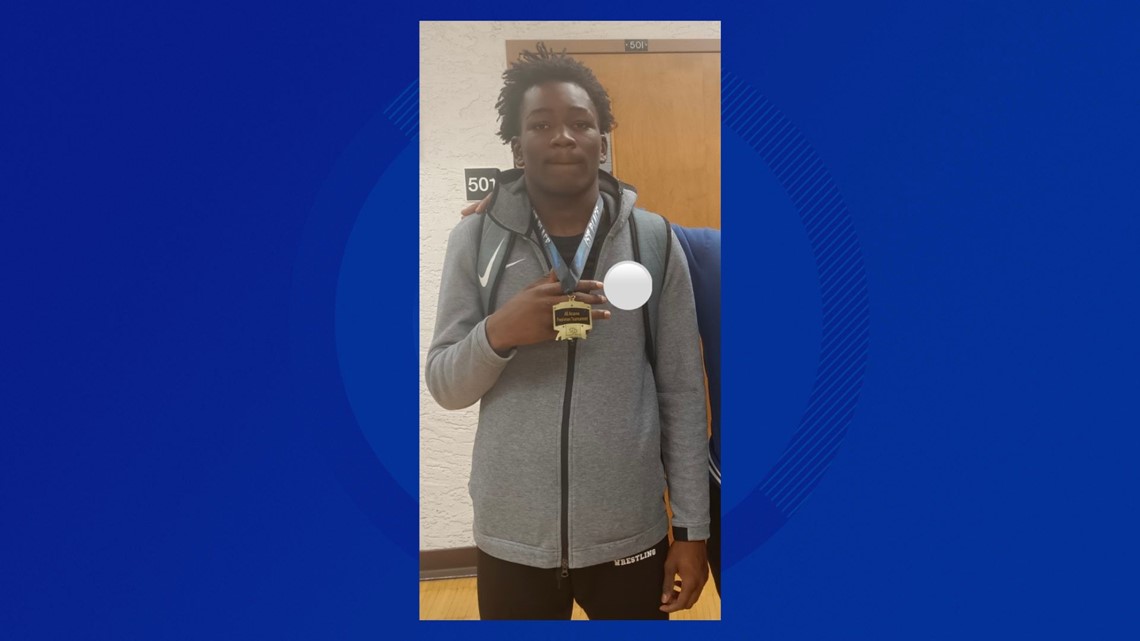SHOW LOW, Ariz. — Law enforcement officials say the 15-year-old student-athlete from Cesar Chavez High School who was reported missing Monday night at Show Low Lake has been found deceased.
The Navajo County Sheriff's Office received a 911 call at about 8 p.m. regarding a teenage swimmer who had gone missing in the lake. Officers from several local agencies responded and began looking for the juvenile by boat, ground, and air.
The boy, who's been identified as Christopher Hampton from Phoenix, was found deceased Tuesday afternoon.
"Sheriff Clouse and the entire Navajo County Sheriff’s Office send our deepest condolence to the family of Christopher," the sheriff's office wrote in a statement.
The Phoenix Union High School District said in a statement that the Cesar Chavez High School football team visited Show Low Lake on Monday after attending an athletic camp at Lakeside-Blue Ridge High School.
"This afternoon, we learned the unfortunate news that Cesar Chavez High School student Christopher Hampton lost his life while at Show Low Lake. We wish to express our sympathy to his family and friends that are grieving this loss. This tragedy impacts all communities that we serve," the district wrote in a statement.
The district said school officials will be cooperating with local officials as the investigation continues.


Up to Speed
Flooding Safety:
The Arizona Fire & Medical Authority has provided the following tips on what hazards to watch out for during and after a flood, including fire, electrical and chemical safety:
Generators and alternative heating devices can create fire hazards during flooding if they aren’t used correctly or maintained properly. Pools of water and appliances can become electrically charged and can cause electrical fires.
On electricity, residents in flooded areas should turn off the power to their homes if they can reach the main breaker or fuse box. All wiring in the house may be electrically charged and hazardous. Residents should have a professional technician check their home for damages before turning on the power.
Make sure potentially combustible liquids like paint thinner, lighter fluid or gasoline haven’t spilled within or near your home. Keep combustible liquids away from electrical or alternative heat sources as to not start a fire.
All smoke alarms in the home should be tested monthly and batteries should be replaced yearly. Some smoke alarms are dependent on your home’s electrical service and may go out when power is turned off.
Make sure the fire hydrant near your home is cleared of debris so the fire department can assess it easily in the event of a fire.
Drowning Prevention Tips:
Drowning is the leading cause of death for children between ages 1-4 aside from birth defects, according to the Centers for Disease Control and Prevention. Three children die every day as a result of drowning. Here are some tips from the CDC on how to protect children around water:
Learn life-saving skills.
Everyone should know the basics of swimming (floating, moving through the water) and CPR.
Fence it off.
Install a four–sided isolation fence, with self–closing and self–latching gates, around backyard swimming pools. This can help keep children away from the area when they aren’t supposed to be swimming. Pool fences should be completely separate the house and play area from the pool.
Life jackets are a must.
Make sure kids wear life jackets in and around natural bodies of water, such as lakes or the ocean, even if they know how to swim. Life jackets can be used in and around pools for weaker swimmers too.
Keep a close watch
When kids are in or near water (including bathtubs), closely supervise them at all times. Because drowning happens quickly and quietly, adults watching kids in or near water should avoid distracting activities like reading books, talking on the phone, or using alcohol and drugs.

